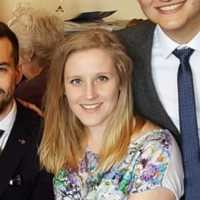‘New MedEd’: building a doctor in a different way
In an age where medical students are facing ever increasing pressures and greater challenges, Jonny Guckian asks whether the answer to all our learning problems lies in embracing our creative and critical sides…
The hypoglossal is the twelfth cranial nerve,
Twelve: stick your tongue out
Eleven: shrug your shoulders
Ten: makes you chunder
Nine: very tasty
Eight: makes you dizzy
Seven: screw your face up
Six: looking sideways
Five: NEURALGIA!
Four: down and out
Three: up and down
Two: helps you see
And one has a funny kind of smell!
I must admit, watching a video entitled ‘The Twelve Cranial Nerves of Christmas’ for a Summer exam did make me feel slightly unsettled. On one hand, here I had an off-key lecturer chorusing in a manner as disturbing as putting up your Christmas tree in March. On the other… it just worked. I put down my worryingly underused neurology textbook and watched the Youtube video again. And again. One more viewing, and I had the cranial nerves nailed. Who needs a lewd mnemonic?
This experience I had in medical school summed up for me a completely different world of learning that is out there. It combined the use of a video clip, singing a song and a stat bolus of comedy to achieve a learning outcome. Not only did it work, but it worked with style. I haven’t forgotten my cranial nerves since.
Every learner is different, and it’s impossible to cater for everyone. My first and second years of medical school were a dreadful slog. I worshipped at the temple of the textbook: a religion that deep down I knew I didn’t believe in. Despite our recent ‘Devil’s Advocate’ blog post, I do think there is a place for a solid foundation of textbook learning. However, that just didn’t do it for me. I needed something different.
So, like any post-teen in a funk, I turned to the Internet. It did not disappoint. Reams of quality reference pages that I could learn from, picking and choosing which websites suited which topics, using my initiative to critically appraise the information the Internet was offering me. Then on this solid foundation I built floors and floors of customized revision: mind maps using the Mind Node tool, quizzes using the Ward Round mobile app, hilarious podcast learning using Medpod 101. Revising heart rhythms getting you down? Have no fear. Here you can find them all in interpretive dance format. What’s not to love? This kind of New MedEd really makes medicine come to life. It really is MedEd 2.0.
I understand that this idea challenges a lot of the traditional thinking in medicine. When I presented an evaluation of our ‘#SixSecondStudying’ Vine series at a Medical Education conference recently, I was greeted by derision and challenges from a Psychiatry consultant, who felt that it was ‘preposterous’ that ‘six second soundbites’ could replace actually attending a ward and meeting patients as a learning tool.
Herein lies the misunderstanding, or perhaps the miscommunication. All of the wonderful learning tools I have made a song and dance about (literally) above, are intended to supplement learning: not replace it. I doubt anyone could seriously argue that you could build a doctor without a few textbooks and patient experiences. Equally, however, I would take issue with those who state that ‘New MedEd’ can’t be key building block. Who’s to say that a rap can’t tell you the function of the spleen, that a game of ‘articulate’ can’t remind you of the cause of bronchiolitis? Or that a festive jingle can’t help a frustrated student finally crack those twelve cranial nerves?
We’re entering the age of New MedEd, where students and juniors alike have such a variety of resources to choose from. One day, I hope that we can all appreciate the positive impact creative learning tools can have on those for whom a textbook just doesn’t do it. Until then, I’m off to revise my cranial nerves. Now, all together, after me…
“Olfactory is the first cranial nerve…”




